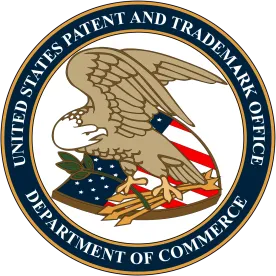When you apply for a patent in the United States, you have a legal duty to disclose prior art that could be used to reject your application — in essence, information that may be used against you by the examiner of your application. While persons accused of a crime have a right to remain silent, so as to avoid self-incrimination, inventors applying for a patent have no such right. To the contrary, an inventor’s failure to comply with the duty of disclosure risks any resulting patent being unenforceable.
The Duty of Disclosure
Each inventor, attorney, agent, person involved in preparing, filing, or prosecuting a patent application as well as any person associated with the inventor, the applicant, an assignee, or one to whom there is an obligation to assign, has a duty of candor and good faith in all proceedings before the United States Patent and Trademark Office (Patent Office). This duty arises from a federal regulation, 37 CFR §1.56, which is commonly known as “Rule 56.”
Rule 56 imposes a duty to disclose, to the Patent Office, all information known to be material to the patentability of a pending claim. This duty persists from filing until the claim is cancelled or withdrawn, or the application becomes abandoned. Even after allowance, the duty persists until a patent grants. Cumulative or redundant information is not required to be submitted to the Patent Office, and patent applicants have no duty to search for information known to be material to the patentability of a pending claim. But if they become aware of any such information, they must cite that information to the Patent Office.
Material information is information that establishes, alone or in combination with other information, and without consideration of contrary evidence, that a claim is unpatentable (e.g., not novel, obvious, unclear, indefinite, or insufficiently taught). Material information includes information that refutes, or is inconsistent with, a position taken in arguing for patentability or against an allegation of unpatentability.
The duty is satisfied by filing an Information Disclosure Statement (IDS) with the Patent Office. The IDS lists each piece of prior art that is being disclosed and includes a citation suitable for identifying the publically available information.
The Need to Comply With the Duty of Disclosure
Patent applicants sometimes avoid running prior art searches for fear of becoming aware of information they will be required to disclose. Such an approach may avoid the need to disclose relevant prior art to the Patent Office. However, a patent applicant who forgoes a prior art search may unnecessarily expend time and resources filing and prosecuting a patent application that had little to no chance of being granted as a patent in the first place.
More often, and because internet searching is so readily available, most inventors or applicants conduct some level of searching related to their invention by the time they file a patent application. Compliance with the duty of disclosure therefore requires maintenance of a record of the prior art of which they are aware.
Noncompliance with the Duty Can Render a Patent Unenforceable.
The courts have held patents unenforceable when evidence exists that an applicant was aware of, but did not disclose, prior art that was material to the patentability of their invention. For example, a potential infringer will seek discovery of documents from the patent owner if they are ever sued for patent infringement. The patent owner’s digital search records could be used to demonstrate that material information was known to the inventor or applicant but not disclosed to the Patent Office. If non-compliance with Rule 56 is proven, a judge may deem the asserted patent unenforceable for fraud on the Patent Office. No damages or remedies would then be available to the patent owner for any infringement.
Practices to Ensure Compliance with the Duty of Disclosure
To facilitate compliance with the duty of disclosure, patent applicants and their employees may wish to maintain a record of citations (e.g., author, title, publisher, volume, page, date) of material information for each patent family and related families. This would include background knowledge, seminal works, and the closest public disclosures of which they are aware.
Ideally, any publically available information that might reasonably be used by another to argue that a claim is unpatentable should be submitted for consideration. However, even if the applicant disagrees with such an argument, information should be cited if another might rely on it to allege that a claim is unpatentable.
This includes, but is not limited to:
-
prior art cited in search reports of a foreign patent office in a counterpart application;
-
the closest publically available information in any form of which persons associated with the filing or prosecution of a patent application are aware;
-
public uses; and
-
sales.
Takeaway
Inventors and patent applicants should be aware of their duty of disclosure. Inventors and patent applicants must comply with the duty of disclosure to avoid the possibility that their patent is later deemed unenforceable. There is no ideal system for maintaining these records. The best system is one which is easiest to implement and comply with, and which is efficiently communicated to the patent attorney handling the application.




 />i
/>i
